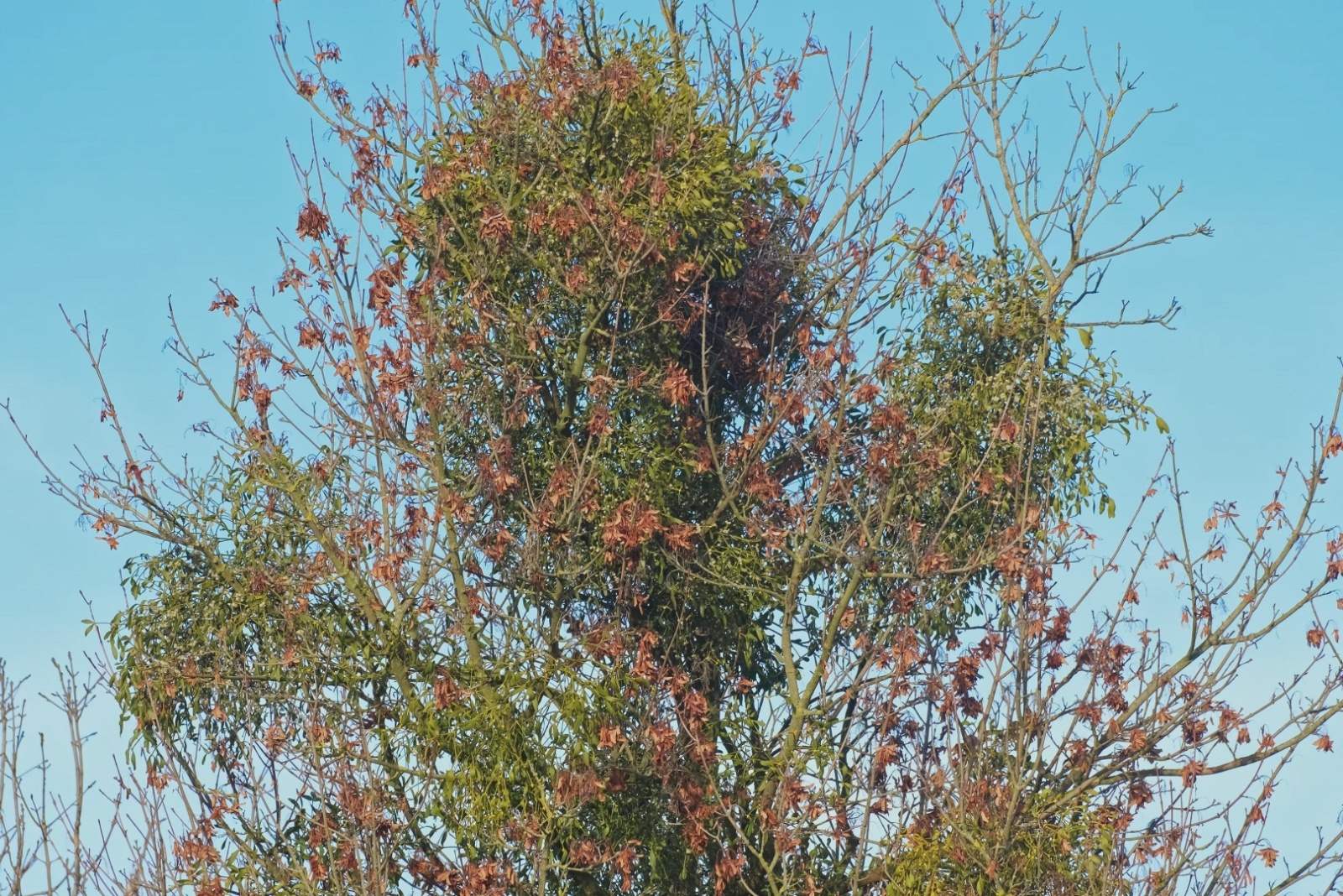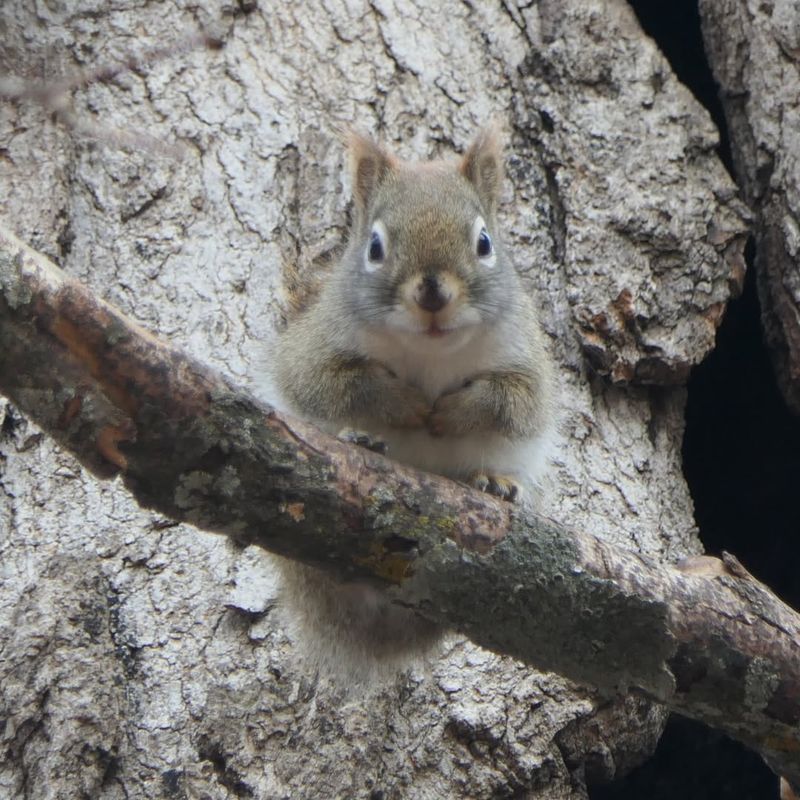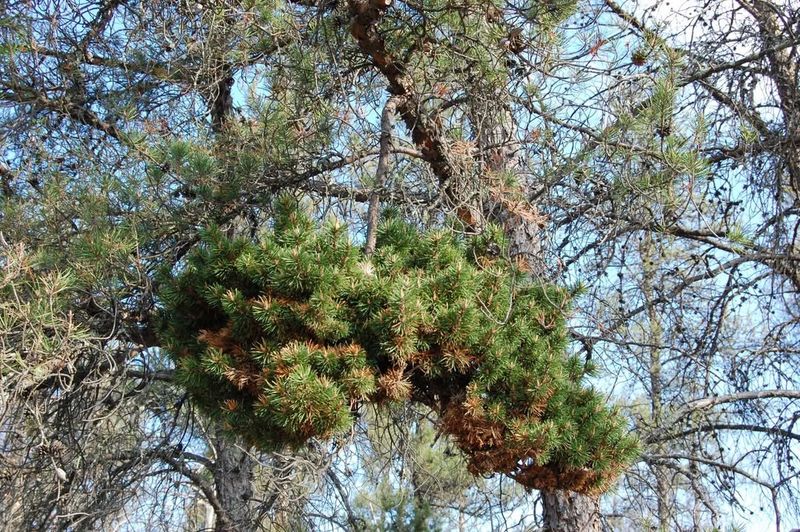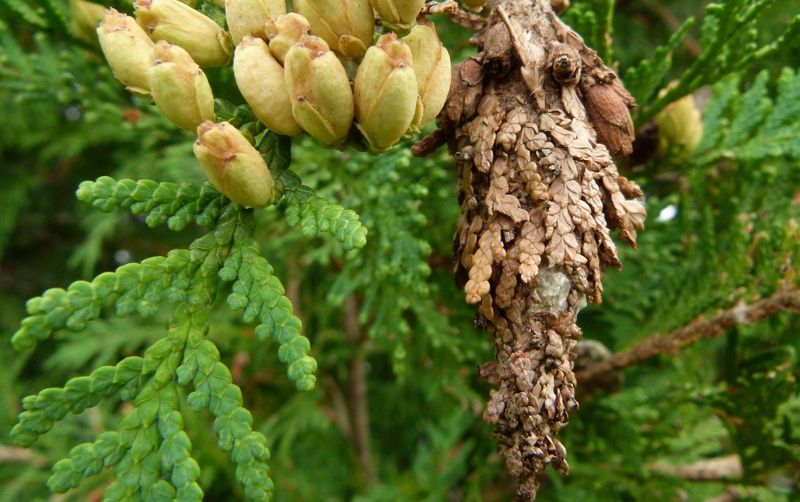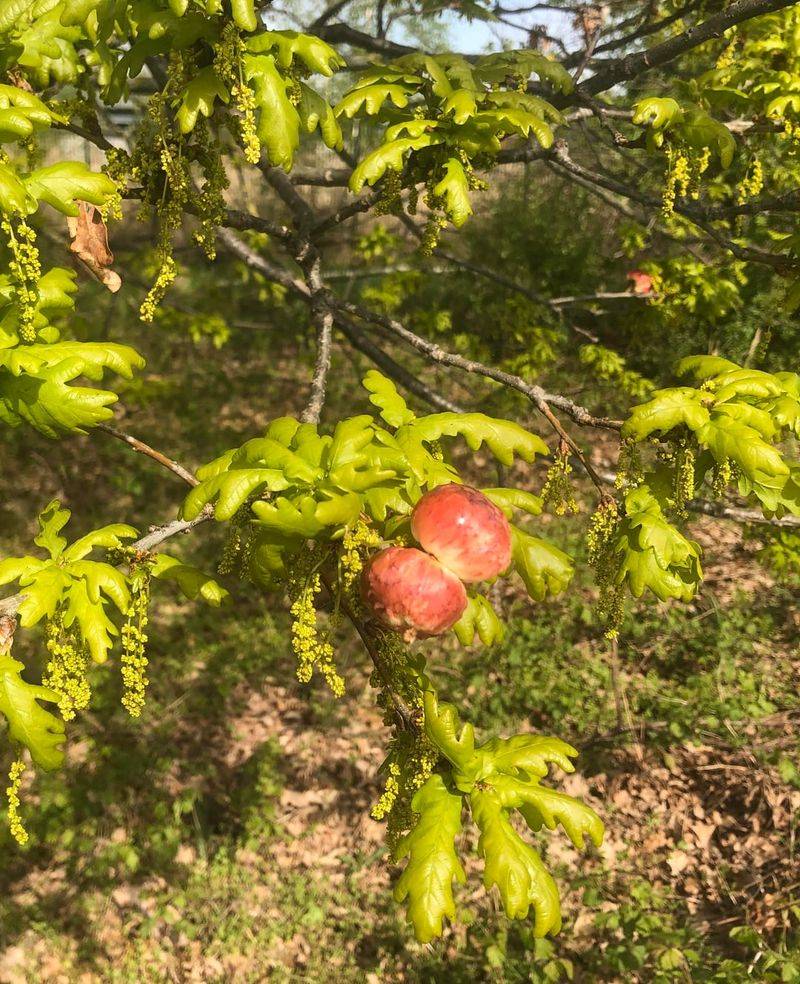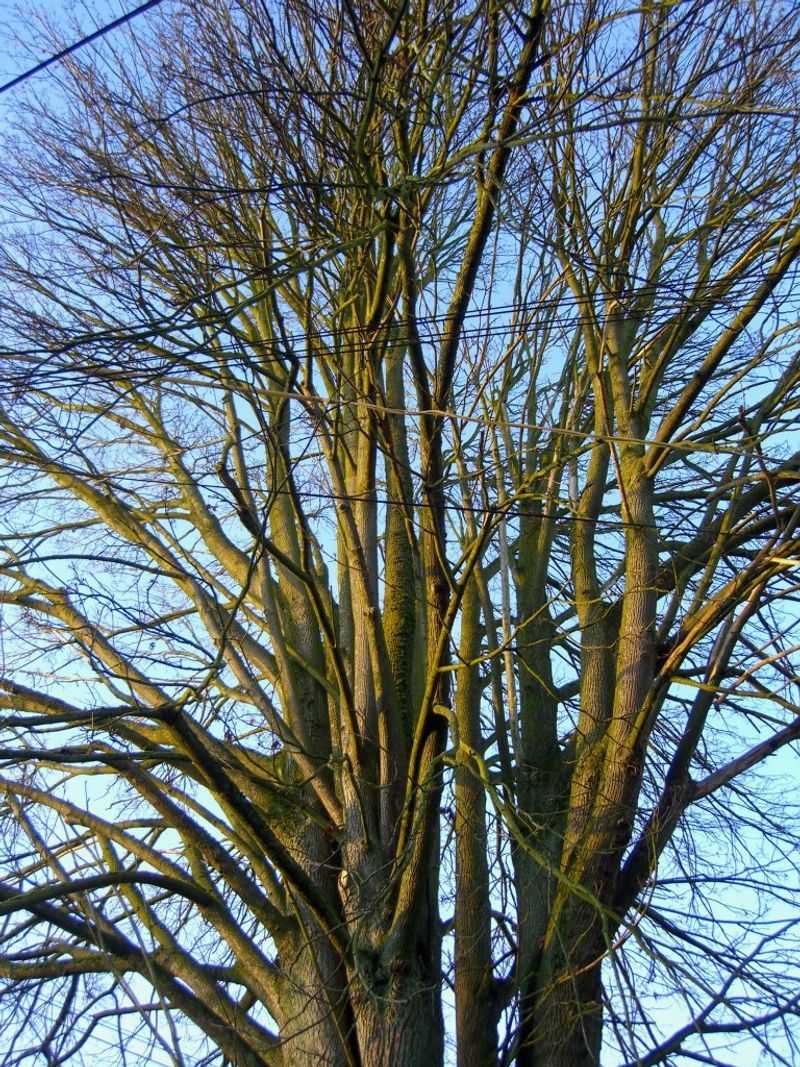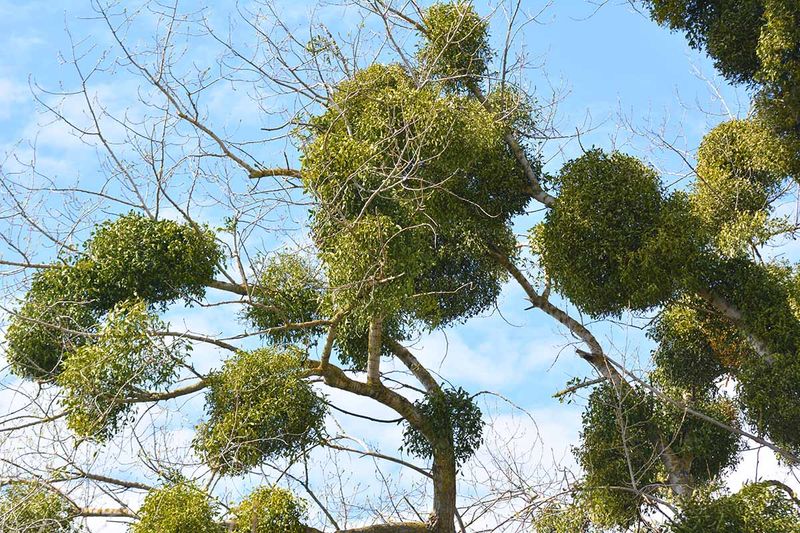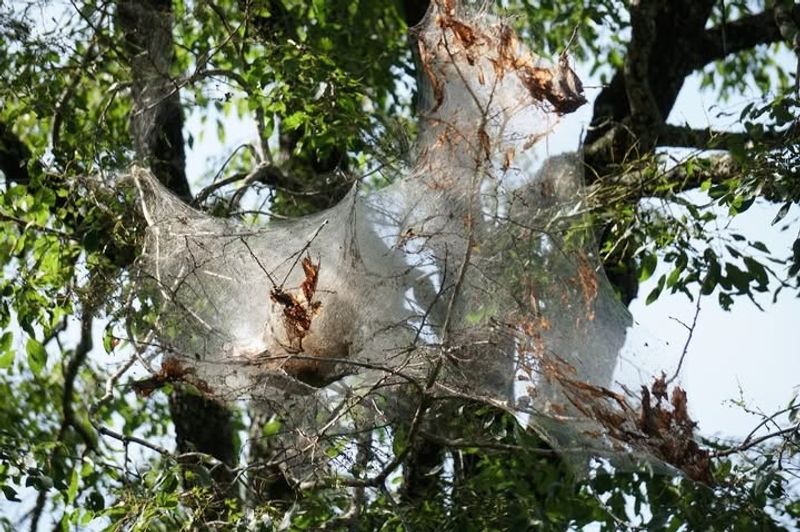Ever spotted a big, messy ball of leaves tucked high up in a tree and wondered if birds built it? You might be surprised to learn that it’s probably not a bird nest at all.
Iowa trees are home to several creatures and natural phenomena that create leafy structures, and most of them have nothing to do with our feathered friends. Understanding what you’re really looking at can help you appreciate the wildlife and nature around you even more.
1. Squirrel Dreys Are Cozy Homes
Squirrels build structures called dreys that look surprisingly similar to messy bird nests. These woodland architects weave together leaves, twigs, and bark to create weatherproof shelters in tree branches.
During fall and winter, dreys become especially visible when other leaves drop. Gray squirrels and fox squirrels are common in Iowa and prefer building their homes 20 to 40 feet high.
Unlike bird nests, dreys are larger, bulkier, and used year-round for sleeping and raising babies.
2. Witches’ Broom Looks Spooky But Harmless
Sometimes trees develop odd growths called witches’ broom that cluster branches and leaves into dense, tangled balls. Fungi, mites, or viruses cause this strange deformity, making branches grow abnormally thick and bunched together.
Hackberry trees in Iowa commonly develop witches’ broom, creating dramatic leafy clumps that catch your eye. The growth won’t kill the tree, though it does look peculiar against the normal branches.
People often mistake these natural oddities for nests because of their rounded, bushy appearance.
3. Bagworms Create Protective Cases
Bagworms are caterpillars that construct cone-shaped bags from silk, leaves, and twigs as camouflage and protection. These clever insects attach their portable homes to branches and gradually enlarge them as they grow.
When multiple bagworms infest one area, their cases can cluster together, resembling a leafy ball from a distance. Evergreen and deciduous trees throughout Iowa frequently host these persistent pests.
The bags remain attached even after the caterpillars transform into moths, creating lasting decorations on branches.
4. Galls Form From Insect Activity
Various insects lay eggs on tree tissue, triggering abnormal growth called galls that can appear as leafy or woody balls. Oak trees in Iowa particularly attract gall wasps, which cause the tree to form round growths for larva protection.
Galls come in many shapes and sizes, from tiny bumps to softball-sized spheres covered in leaf-like material. Most galls don’t seriously harm the tree, serving mainly as nurseries for developing insects.
Their unusual appearance often fools people into thinking they’re bird nests or other animal homes.
5. Leaf Clumps From Wind And Debris
Strong Iowa winds sometimes blow leaves, plastic bags, and other debris into tree branches where they get tangled and stuck. Over time, more material accumulates in the same spot, creating what looks like an intentional structure.
Branch forks and dense areas naturally catch windblown items, building up impressive collections of random stuff. Storms can wedge particularly large amounts of leaves into tight spaces, forming convincing fake nests.
A closer look usually reveals the random, chaotic nature of these accidental creations.
6. Mistletoe Creates Dense Clusters
Mistletoe might remind you of holiday decorations, but this parasitic plant actually grows wild in Iowa trees and creates dense, leafy balls that look nothing like bird nests.
Unlike nests made from twigs and grass, mistletoe forms evergreen clumps that stay bright green even during winter months when surrounding branches are bare. The plant sends roots into the tree’s branches to steal water and nutrients, which lets it grow into basketball-sized spheres over time.
These clusters can weigh down branches and harm your tree’s health if left unchecked. Bird nests are temporary homes built each spring, but mistletoe grows year-round and becomes larger with each passing season, making it easy to spot the difference once you know what to look for.
7. Tent Caterpillars Build Silky Webs
Have you ever noticed a messy, web-covered ball of leaves that looks almost ghostly? Tent caterpillars are the culprits behind these strange structures that appear in Iowa trees every spring and early summer.
These hungry insects spin silk threads around branches and leaves to create protective shelters where dozens of caterpillars gather together. The webbing catches falling leaves and debris, building up into a tangled mass that might fool you into thinking it’s a nest.
However, bird nests are carefully woven and cup-shaped, while caterpillar tents look ragged and irregular. You’ll often see the caterpillars crawling in and out during daylight hours, which is a dead giveaway that birds aren’t involved in this leafy creation at all.

